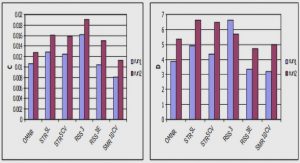Get Complete Project Material File(s) Now! »
Emergence and Consolidation of European Traders’ Monopoly Over Colonial Commerce, 1890s-1950
In 1874, Donald Fraser arrived in Lesotho. He was the son of William Fraser of Ipswich, England, who had been a prominent wool merchant since 1837 and was the owner of a prosperous business entity called William Fraser & Company.88 In the 1860s, Donald Fraser went to East London, South Africa, as a representative of his father’s company. However, the demand for the expensive and sophisticated type of clothing they dealt in was low in South Africa. When he learnt of the booming southern African economy, following the discovery of diamonds in Kimberley, Donald Fraser moved into the interior to establish trading stores. In 1877, he bought his first store in Lesotho from George Nutter Tudhope and William Wells at Liphiring in the Mafeteng district.89 Douglas Henry Fraser, his brother, soon joined Donald in Lesotho. Thereafter, the two Fraser brothers acquired more stores in Lesotho. By 1880, they were described as the “leading traders in the territory”.90 They had achieved this status by taking advantage of the Gun War (1880–1881) and the diamond price recession of 1882 to 1883, which followed the war, as will be seen below. As events that eventually led to the outbreak of the Gun War unfolded, European traders were amongst the first to recognise the precipitation of the war. Many of them abandoned their stores.91 They took their merchandise and property out of Lesotho into the Orange Free State. Fearing that the traders’ exodus would create panic in Lesotho, the colonial government threatened that the trading licences of those who left would not be renewed and those who left would not be allowed to return to Lesotho when the war was over. This discouraged the movement to a degree. However, those who stayed on sent their families away for safety, while the men remained to defend their stores.92
Formation and Activities of the Lesotho National Development Corporation
Against the backdrop of the above outlined economic challenges after the country gained political independence, the government’s priority was to develop and diversify the country’s domestic economy. Accordingly, with the assistance of international organisations, donors and South African government, the newly independent government of Lesotho established institutions and introduced various programmes to industrialise and modernise the country’s economy. To that end, the government set mainly four broad national aims. These were economic growth, social justice, maximum domestic employment and economic independence.25 To achieve these developmental goals, it created the Lesotho National Development Corporation (LNDC).LNDC’s development efforts were mainly focused on industrialising and diversifying the country’s economy by promoting manufacturing businesses, particularly through foreign direct investment. By 1966, there were a few financial institutions operating in the country. There were two commercial banks (Barclays Bank and Standard Bank), Post Office Savings Bank, South African Building Society, insurance companies, and cooperative organisations – Lesotho Co operative Savings Society and the Credit Union. With the exception of the Post Office Savings Bank and Cooperative Societies, all these financial institutions were headquartered in, and controlled from, South Africa. The Basutoland Post Office Savings Bank was the first institution that was established in 1891 by the colonial government to facilitate the flows of money and information between Lesotho and South Africa. Its deposits were passed on to the South African Post Office Bank.26
CHAPTER 1
Introduction and Research Methods
CHAPTER 2
Literature Review
CHAPTER 3
Colonial Economy, 1870s-1966
CHAPTER 4
Basotho Traders’ Economic Solidarity after Independence, 1966-1975
CHAPTER 5
The Developmental State after Independence, 1975-1986
CHAPTER 6
Neo-liberal Economic Restructuring, 1987-2000
CHAPTER 7
Continued Marginalisation of, and Resistance by, Indigenously-Owned Business: 2000-2012
CHAPTER 8
Indigenously-Owned Business and the Influx of the Chinese Traders, 2000c-2012
CHAPTER 9
Conclusion





